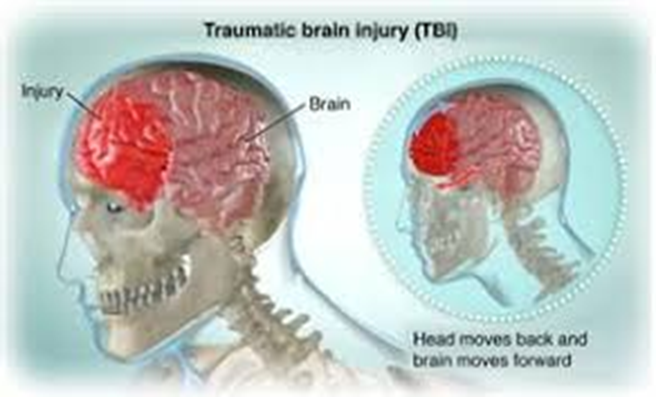Which risk factor for traumatic brain injury (TBI) should a nurse include in a discussion about prevention for a group of adolescents?

Falls occur more frequently in the younger population.
Females have twice the risk that males do.
Concussions in sports and motor vehicle accidents cause the largest number of TBIs in teens.
Most firearm incidents are accidental.
The Correct Answer is C
Choice A Reason:
While falls are a common cause of injury in children, they are not the leading cause of TBI in adolescents. Falls tend to be more frequent in the younger population, particularly in children under the age of 4. In adolescents, sports-related injuries and motor vehicle accidents are more prevalent causes of TBI.
Choice B Reason:
The statement that females have twice the risk of TBI compared to males is incorrect. National data reveal that males are at increased risk of TBI compared to females, especially in the adolescent age group. This is likely due to higher engagement in risk-taking behaviors and contact sports.
Choice C Reason:
Concussions in sports and motor vehicle accidents are indeed the leading causes of TBI in adolescents. Engaging in contact sports such as football, hockey, and soccer can lead to concussions, which are a form of mild TBI. Motor vehicle accidents are also a significant risk factor due to high-impact collisions that can cause head injuries.
Choice D Reason:
Firearm incidents are a serious concern for TBI; however, they are not the most common cause of TBI in adolescents. While firearm-related injuries can be severe and are a leading cause of TBI-related deaths, concussions from sports and motor vehicle accidents account for a larger number of non-fatal TBIs in this age group.
Nursing Test Bank
Naxlex Comprehensive Predictor Exams
Related Questions
Correct Answer is A
Explanation
Choice a reason:
The tympanic membrane, also known as the eardrum, is a critical component of the middle ear. It is a thin membrane that separates the external ear from the middle ear and vibrates in response to sound waves. These vibrations are then transmitted to the ossicles within the middle ear, which amplify and carry the sound to the inner ear.
Choice b reason:
The ear lobe is part of the external ear, not the middle ear. It is composed of soft skin and fatty tissue and does not play a role in hearing. The ear lobe serves primarily as a site for body decoration such as earrings.
Choice c reason:
The cochlea is a structure located in the inner ear. It is a spiral-shaped organ that contains the organ of Corti, the sensory organ of hearing. The cochlea converts the mechanical vibrations from the middle ear into nerve impulses that are sent to the brain.
Choice d reason:
The pinna, or auricle, is the visible part of the external ear. It is made of cartilage and skin and functions to capture sound waves and direct them into the ear canal towards the tympanic membrane.
Correct Answer is C
Explanation
Choice a reason:
Getting a longer cord for the telephone may reduce the risk of tripping over a short cord but could potentially introduce new tripping hazards if not managed properly. It's important to keep cords secured and out of walkways to prevent falls.
Choice b reason:
Placing a throw rug over electrical cords is not advisable as it can create a tripping hazard. Rugs should be secured with non-slip backing and kept away from high-traffic areas to prevent falls.
Choice c reason:
Using handrails in the bathroom is a recommended safety measure to prevent falls. Bathrooms can be slippery, and handrails provide support and stability for residents when moving around in this area.
Choice d reason:
Using chairs without armrests is not a recommended practice for fall prevention. Chairs with armrests can aid residents in safely sitting down and standing up, providing support and reducing the risk of falls.
Whether you are a student looking to ace your exams or a practicing nurse seeking to enhance your expertise , our nursing education contents will empower you with the confidence and competence to make a difference in the lives of patients and become a respected leader in the healthcare field.
Visit Naxlex, invest in your future and unlock endless possibilities with our unparalleled nursing education contents today
Report Wrong Answer on the Current Question
Do you disagree with the answer? If yes, what is your expected answer? Explain.
Kindly be descriptive with the issue you are facing.
